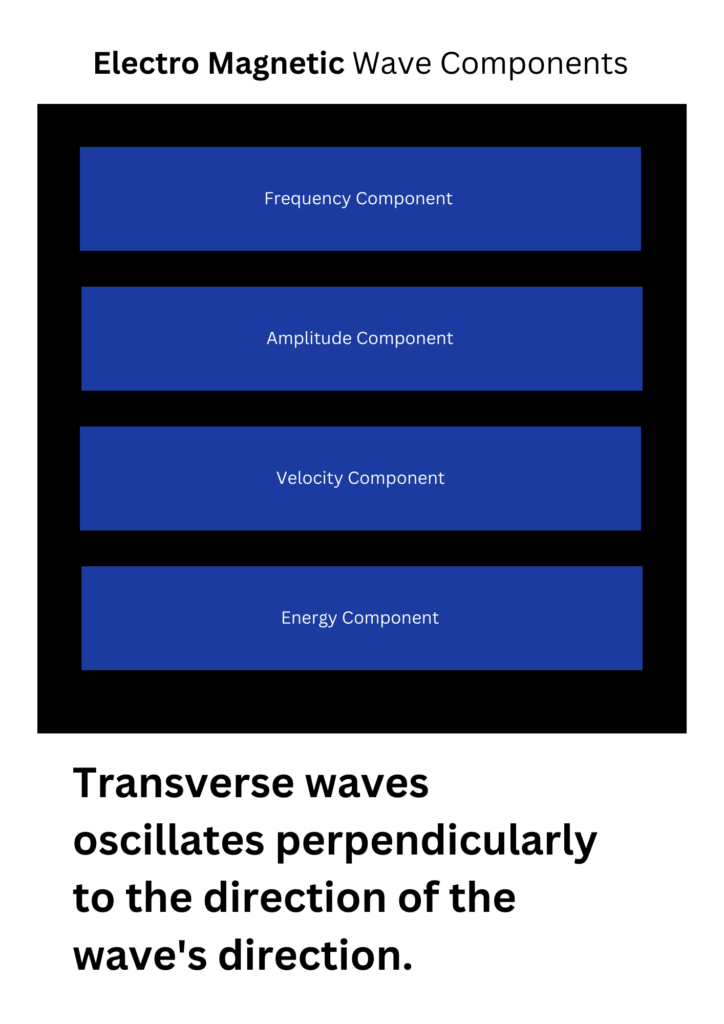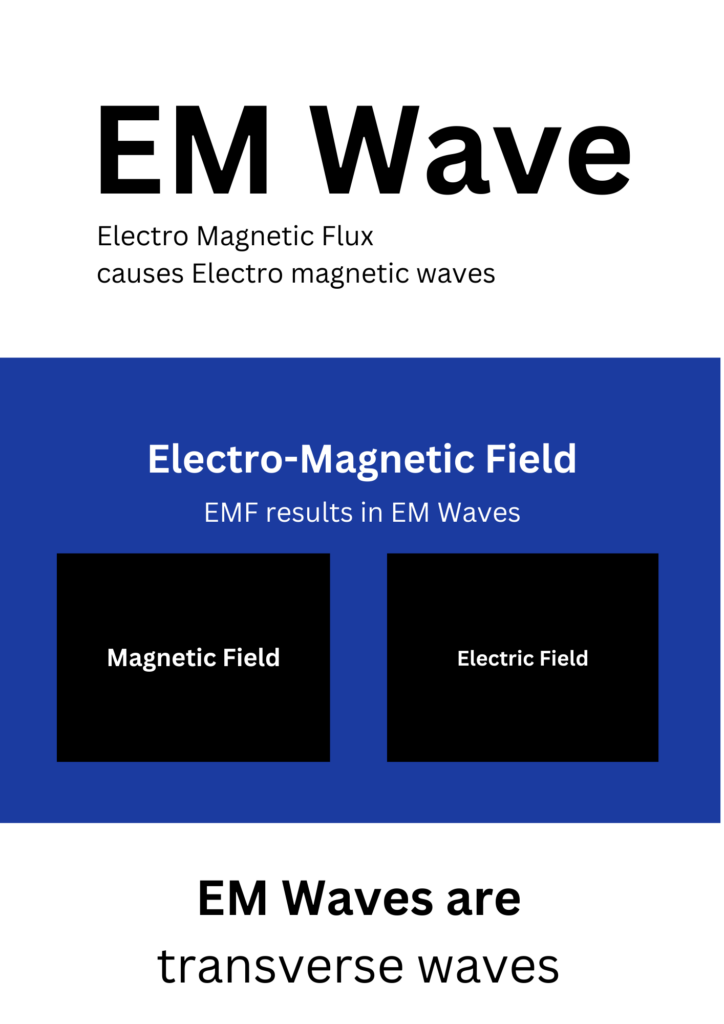Electromagnetic waves are referred to as EM waves. EM waves are transverse waves, EM waves are the propagation of the electric and magnetic field.
Magnetic field + Electric field = Electro-Magnetic Field The EM spectrum includes EM with variable wavelengths : AM | FM | Infrared | UV | Visible | X RAY | Gama Ray |
Many types of waves are part of the electromagnetic spectrum. Charged particles (electrons + protons) create the electromagnetic waves. EM can travel through a vacuum and carry META-DATA of the source that is transmitting it.
When the static electric field is changed then the magnetic field associated with it also changes and this change in the EM flux results in the propagation of electromagnetic waves.
Electric field + Magnetic Field = Electromagnetic field.The frequency of EM waves is measured via SI UNITS called HZ(Hertz). As observed the transverse wave / EM waves have both the particle and wave nature. EM waves have a dual nature. EM Wave location can be retrieved via wave function (probability function).
EM has a particle like quality. | EM has wave-like properties (Dual Nature)
As the EM waves are the propagation of a magnetic field and electric field perpendicular to each other, hence the EM can be polarized, polarization can be referred to as the measurement of EMF alignment (Electromagnetic field).
To describe electromagnetic field we need the following set of data:
- EM (frequency data)
- EM (amplitude data)
- EM (wavelength data)
- EM (energy data)
- EM (wave function data)
Based on the above-mentioned DATA-SETS the EM Wave is defined and carries a lot of vital information. The energy of EM waves is measured by EV (ELECTRON VOLTS) which is an SI unit to measure the energy of EM waves, the electron volt can be defined as the energy required to move an electron from 1 VOLT of potential difference.
The frequency of EMW is inversely proportional to the wavelength.
The frequency of EMW is directly proportional to the energy.
Frequency is measured in HZ (hertz) and Energy is measured in EV (electron volts) both are SI units. The wave function along with frequency and wavelength data can give a lot of information about the wave and its properties. Digital communications technologies are all electro-magnetic waves based.
Diagrams


The article above is rendered by integrating outputs of 1 HUMAN AGENT & 3 AI AGENTS, an amalgamation of HGI and AI to serve technology education globally.